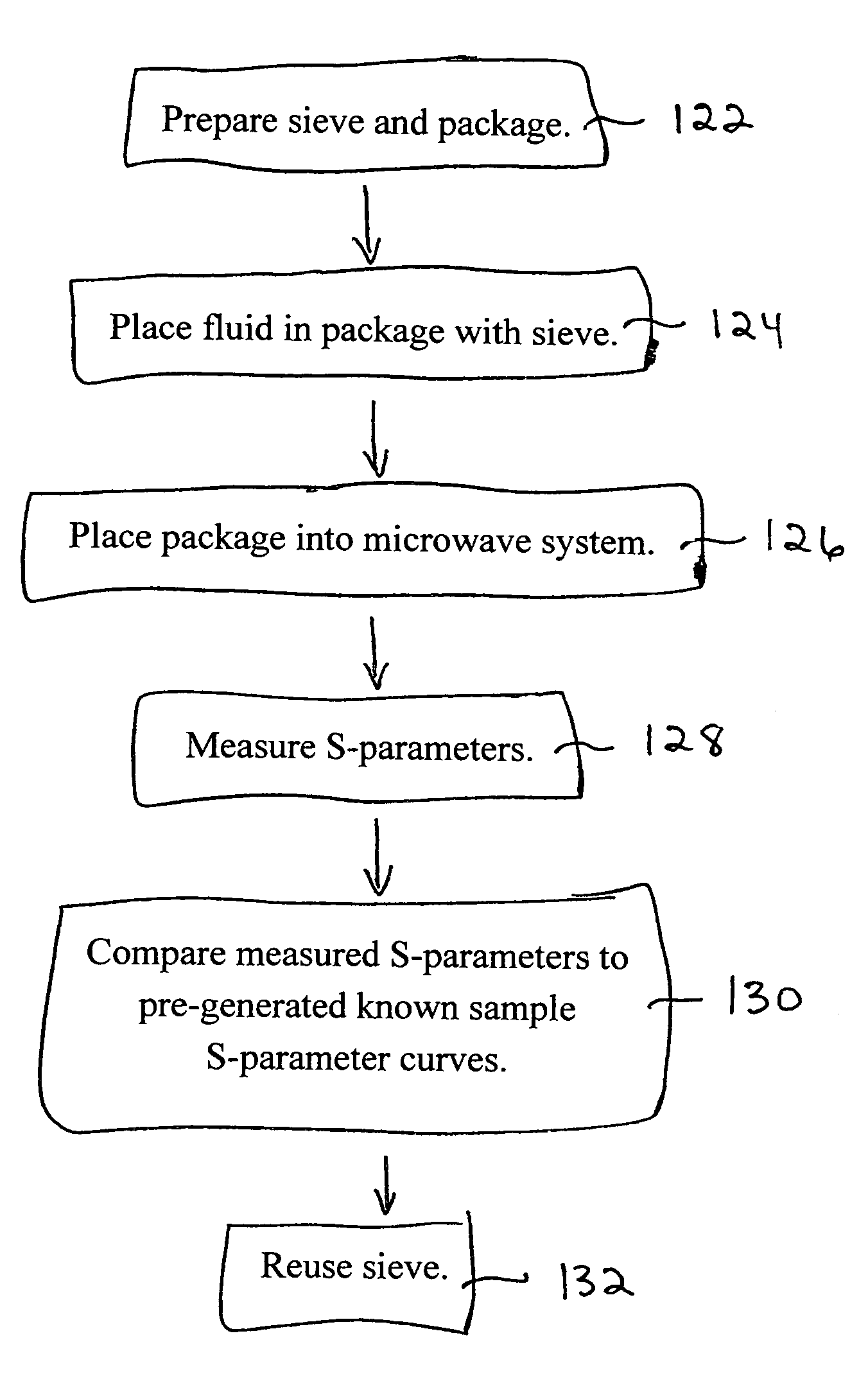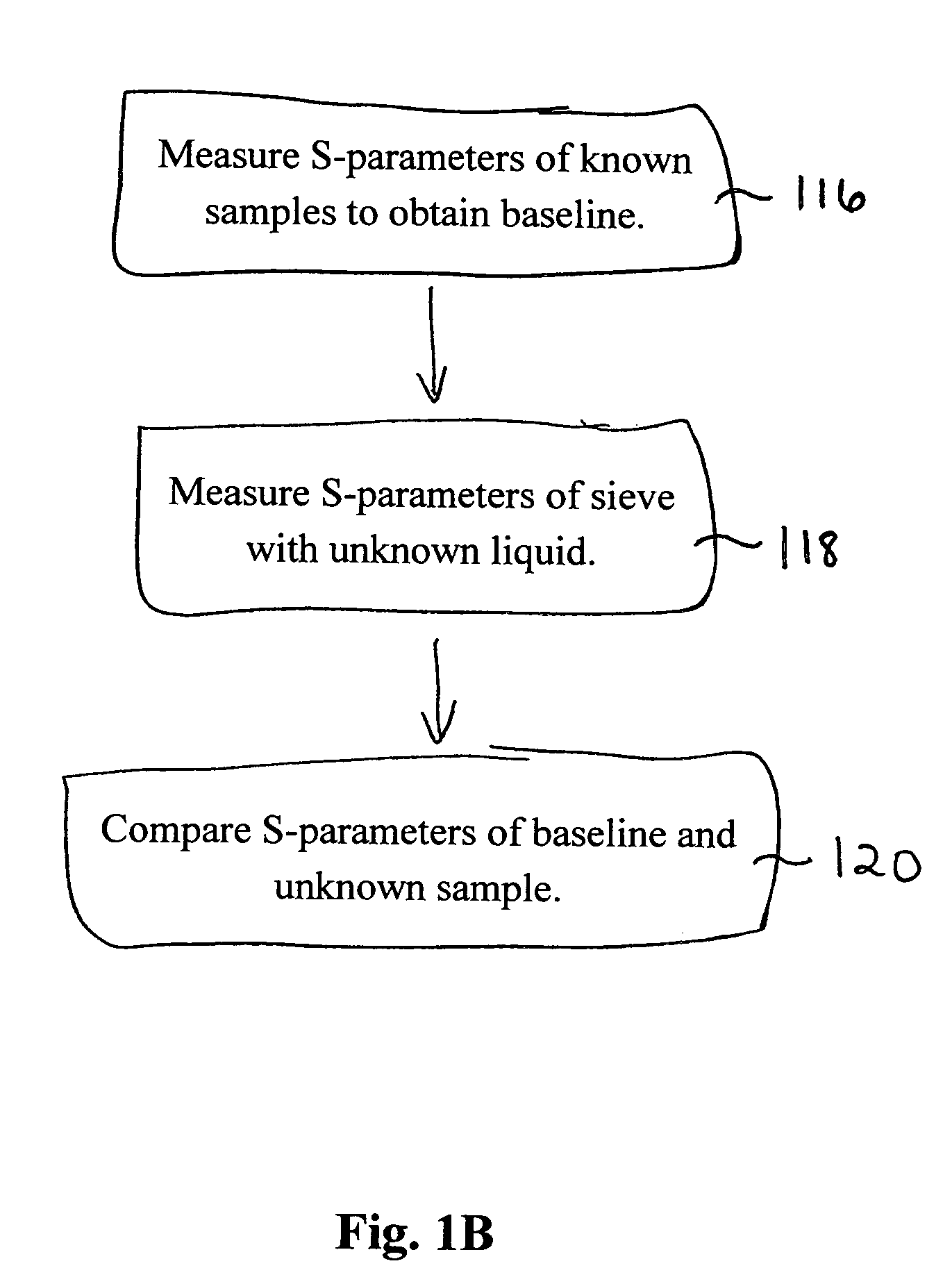Density independent moisture analyzer
a moisture analyzer and density technology, applied in the field of density independent moisture analyzers, can solve the problems of long analysis time, required reagent calibration, equipment and processing problems, etc., and achieve the effect of fast, accurate and reproducibl
- Summary
- Abstract
- Description
- Claims
- Application Information
AI Technical Summary
Benefits of technology
Problems solved by technology
Method used
Image
Examples
Embodiment Construction
[0053]The numerous innovative teachings of the present application will be described with particular reference to the presently preferred embodiment (by way of example, and not of limitation).
[0054]In one embodiment, the present innovations involve obtaining a sample of petroleum for moisture determination, and placing the contents of a foil-sealed package of molecular sieves and the sample into a microwave cavity, coaxial line, or similar transmission line system. The molecular sieve will occupy the majority of the volume of the cavity or line. Hence, the bulk volume seen by the microwave energy effectively has a single density altered only slightly by adding the petroleum sample. The changing density of the petroleum sample, for example, 680 kg / m3 to 980 kg / m3, negligibly offsets the resultant moisture content.
[0055]The another embodiment, the cavity or transmission line is arranged such that the sample and sieve would be first placed in a plastic or paper container, or any materi...
PUM
 Login to View More
Login to View More Abstract
Description
Claims
Application Information
 Login to View More
Login to View More - R&D
- Intellectual Property
- Life Sciences
- Materials
- Tech Scout
- Unparalleled Data Quality
- Higher Quality Content
- 60% Fewer Hallucinations
Browse by: Latest US Patents, China's latest patents, Technical Efficacy Thesaurus, Application Domain, Technology Topic, Popular Technical Reports.
© 2025 PatSnap. All rights reserved.Legal|Privacy policy|Modern Slavery Act Transparency Statement|Sitemap|About US| Contact US: help@patsnap.com



